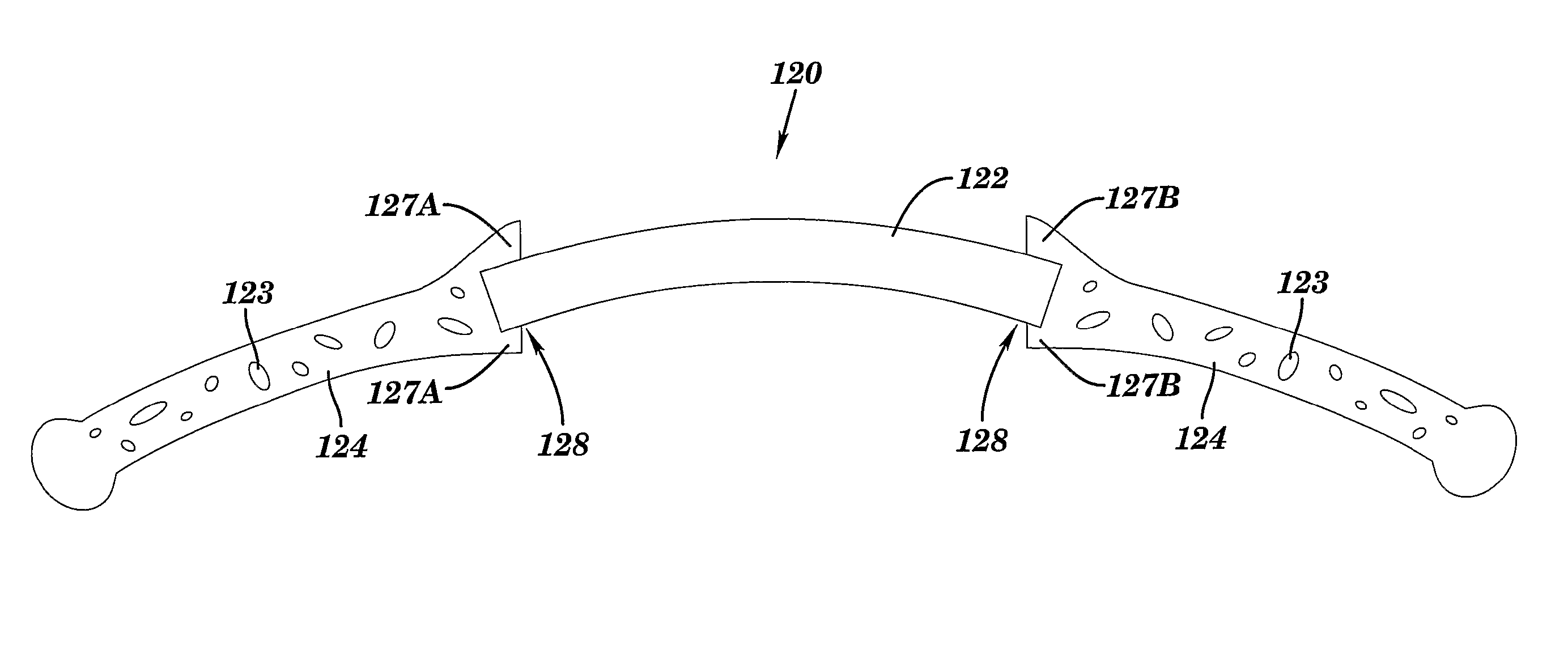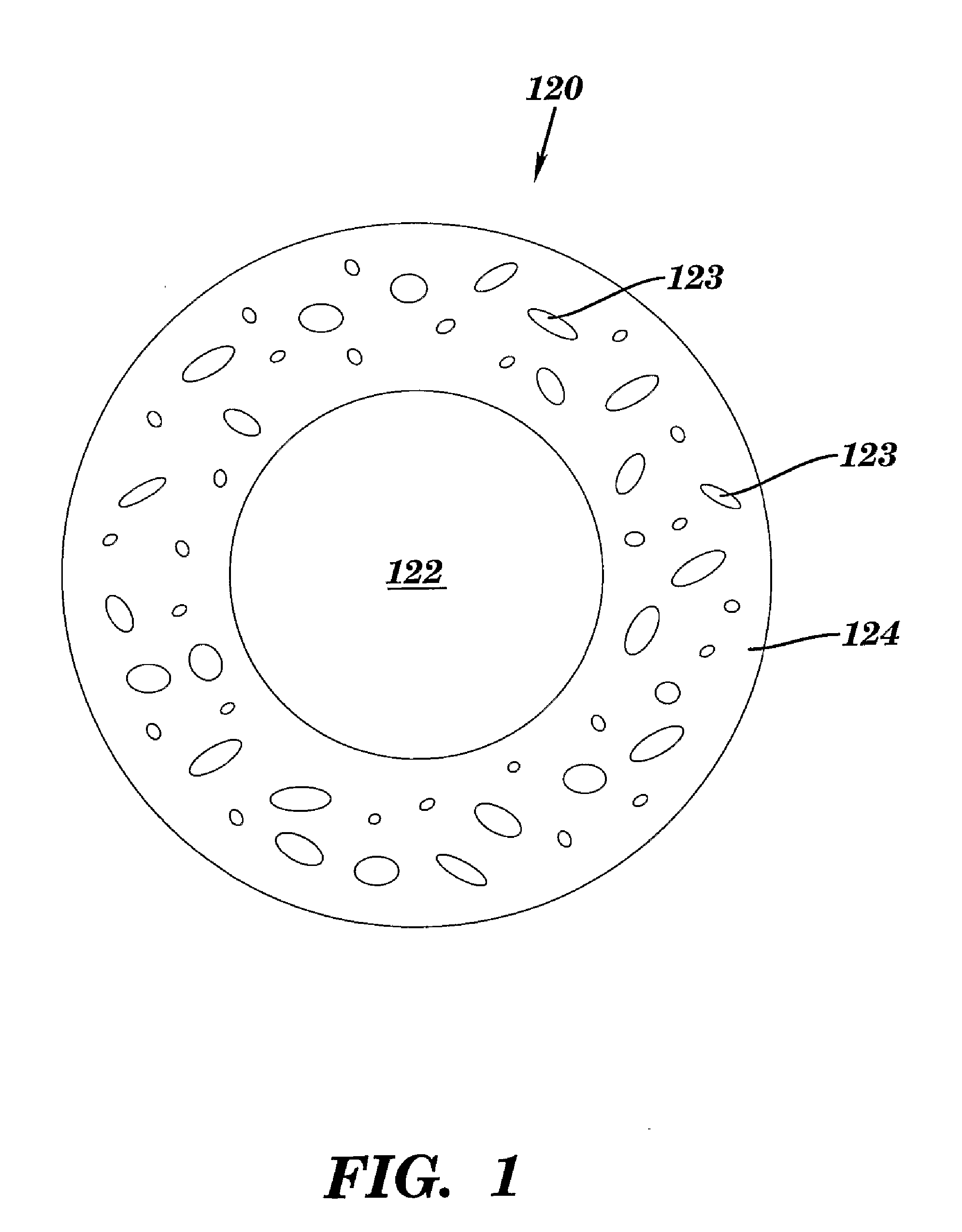Accommodating intraocular lens and methods of use
a technology of intraocular lens and acuity, applied in the field of intraocular lens, can solve the problems of presbyopia patients losing the ability to focus on the ocular field, the natural lens of the eye becomes thicker and less flexible, and the blindness of adults, so as to improve the calculation of lens power, enhance the effect of accommodating intraocular lens movement and optimal acuity
- Summary
- Abstract
- Description
- Claims
- Application Information
AI Technical Summary
Benefits of technology
Problems solved by technology
Method used
Image
Examples
Embodiment Construction
[0053]One aspect of the present invention relates to an intraocular lens having a retainer plate with an annular region surrounding a central opening and an optical lens removably attached to the retainer plate within the central opening.
[0054]FIG. 1 is a plan view of the intraocular lens of the present invention. Intraocular lens 120 has optical lens 122, which is removably attached to retainer plate 124. Either or both of optical lens 122 and retainer plate 124 are constructed of a flexible material including, without limitation, acrylic, silicone, or poly(methylmethacrylate) (“PMMA”), or mixtures thereof. Flexible material allows accommodation of the intraocular lens by flexing with ciliary muscle contraction and vitreous pressure. As a result, intraocular lens 120 has the ability to adjust to surface curvatures. The optical power of a lens or a surface is determined to some extent by the curvature of the surface. An increase or steepening of the curvature (a decrease in the radi...
PUM
 Login to View More
Login to View More Abstract
Description
Claims
Application Information
 Login to View More
Login to View More - R&D
- Intellectual Property
- Life Sciences
- Materials
- Tech Scout
- Unparalleled Data Quality
- Higher Quality Content
- 60% Fewer Hallucinations
Browse by: Latest US Patents, China's latest patents, Technical Efficacy Thesaurus, Application Domain, Technology Topic, Popular Technical Reports.
© 2025 PatSnap. All rights reserved.Legal|Privacy policy|Modern Slavery Act Transparency Statement|Sitemap|About US| Contact US: help@patsnap.com



